Media | Articles
Art of the Overtake: Part 1
(For Part 2, where Preston discusses the art of defending and the evolution of tactics, click here. Now, for Part 1. -Ed)
What do you remember most fondly when you think about your seat time in a race car? The races won? Obviously. The improbable saves, the perfect laps, the magical corners? Well, sure. For me, the most deeply satisfying moments are the competitive passes. I don’t mean overtaking a wanker in a clown car in a Lemons event or blasting past an out-of-class back marker in a sprint race or moving up a position because the driver in front of you flubbed a shift under pressure. I’m talking about a do-or-die pass against an equally matched driver who’s aggressively defending his position.
“Passing is a difficult game,” says Conor Daly, who graduated to the NTT IndyCar Series after take-no-prisoners stints in GP2 and GP3. “All the teams are good. All the drivers are good. There’s not much between them. But it’s not supposed to be easy. Otherwise drivers would do it all the time. And if you’re able to pass somebody who’s driving defensively, that makes it even more electric.”
Overtaking is more difficult now than it’s ever been. In terms of performance, the cars are closer together. So are the drivers. At the same time, defensive driving—which used to be called blocking—has become the norm. In racing movies, of course, passing is simply a matter of pressing down harder on the accelerator or shifting to a higher gear. In the real world, passing is such a challenge that sanctioning bodies have instituted artificial measures to promote it, whether the drag-reduction system in Formula 1 or push-to-pass technology in IndyCar.
“A competitive pass is very difficult to pull off,” says Scott Pruett, whose 50-year career took him from go-karts to sports cars to Indy cars to stock cars to prototypes. “Taking out a guy is easy, but pulling off a decisive pass takes an incredible amount of talent.”
Marketplace
Buy and sell classics with confidence
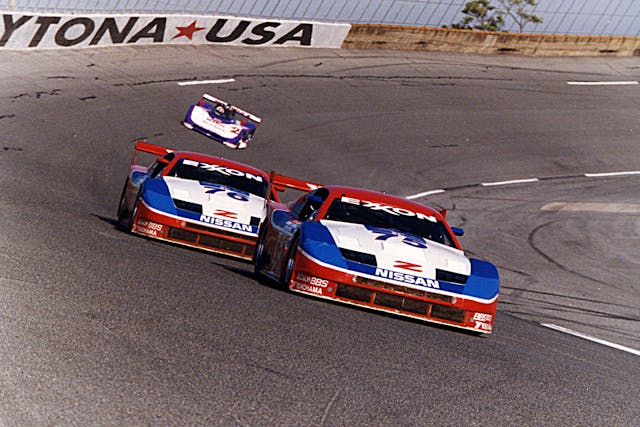
I’ve been thinking a lot about overtaking lately. The inciting incident, as they say in Hollywood, was the approval last year of new “Racing Room & Passing Guidelines” in the SCCA rulebook. Replete with diagrams and scientific-sounding phrases such as the “Entry Vortex of Danger,” this appendix features the most sensible, straightforward, and comprehensible regulations I’ve ever seen.
The new rules piqued my curiosity about what I like to think of as the metaphysics of overtaking. Not only who’s right and who’s wrong when it comes to a contested corner but also the techniques that work best for passing—and for defending, which is the flip side of the coin. At the same time, I wondered how philosophies have evolved over the years. So I decided to chat with race officials, driving instructors and drivers, past and present, to get their general thoughts on the subject and their specific takes on controversial incidents ranging from the Ayrton Senna-Alain Prost contretemps at Suzuka to Alex Zanardi’s epic pass of Bryan Herta at Laguna Seca.
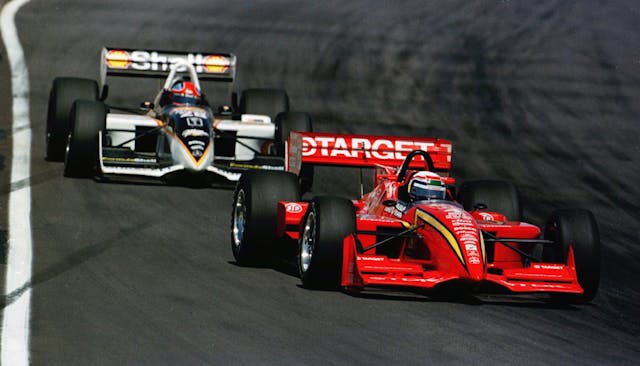
Inevitably, there were disagreements. Formal rules notwithstanding, this territory is dominated by gray areas. “The problem,” says 1998 Indy 500 winner Eddie Cheever, “is that it all happens so quickly. It’s not like a game of chess where you can drum your fingers on the table and think things over. I’ve been asked many times to be a race steward, and I’ve always refused because I know you can always argue both sides.”
Passing is a mission-critical skill. No question there, right? So I was surprised to find that almost everyone I spoke with told me it wasn’t a subject that they’d studied or seriously analyzed while they were working their way up the motorsports ladder. “I don’t remember anybody telling us about overtaking,” says five-time Le Mans champion Derek Bell. “We certainly didn’t have any bloody diagrams.”
Or, in the eloquent words of Max Papis, who raced in F1, Indy cars, IMSA and NASCAR: “There was an ethic to passing people, and there was an art to passing people. But as I remember, there were no rules. Personally, I think it was better that way.”
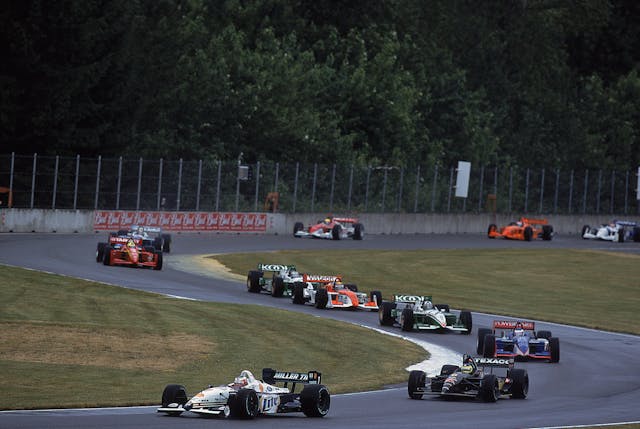
For as long as I can remember, the line I’ve heard repeated like a mantra is that the overtaking driver is responsible for making a clean pass. The beauty of this standard is that it’s so simple and easy to enforce, which is why race stewards love it. But for precisely these reasons, it’s also the foundation for misguided rulings that ignore reality on the ground. After all, passing doesn’t happen in a vacuum, and the driver who’s being passed isn’t an innocent bystander. “You’re locked in a perpetual duel for position, and there’s a limited amount of real estate on the racetrack,” says Chris Dyson, whose race log includes prototypes, Trans Am, and sprint cars on dirt and paved ovals.
As for the notion that the ‘passee’ bears no responsibility for accidents, longtime IMSA race official Mark Raffauf says, “When you’re in front, you’ve earned the right to decide where you want to put your car. But when you deviate from your normal line and start defending your position, the pendulum moves in your direction. I tell some guys, ‘You couldn’t have gotten hammered any worse if you’d put a target on your car.’”
A pendulum is always in motion, which is to say that responsibility for a clean pass swings from case to case and from corner to corner. Differences of opinion are inevitable whether you’re competing in the lowliest club races or the most exalted pro events. Is there any one of us who hasn’t spent at least some time in awkward post-race “discussions” with cranky competitors, trading acrimonious comments about who was the bigger bonehead?
Last year, the SCCA decided that it was time to update the language regarding passing in its rulebook, known as the General Competition Rules (GCR). “There was too much being left open for interpretation, and when that happens, things are ruled on differently,” says SCCA chief operations officer Eric Prill, who is himself a two-time national champion in F Production. “This is a big step in ensuring that we have consistency across our events and program. Drivers come from a variety of different places to race with SCCA, and different groups have different regulations. It was time to provide greater definition to the rules of the road in the SCCA GCR.”
To write the new regulations, SCCA drafted two uniquely qualified drivers: Randy Pobst, who’s earned national championships in pro competition, club racing, and autocross and Terry Earwood, the winningest driver in Firestone Firehawk Endurance Series history and one of the great characters of motorsports. During 36 years of instructing at Skip Barber Driving Schools, he’s ridden shotgun with more than 32,000 would-be racers. When I tell him he’s a braver man that I am, he says, “That’s why they invented Miller Lite.”
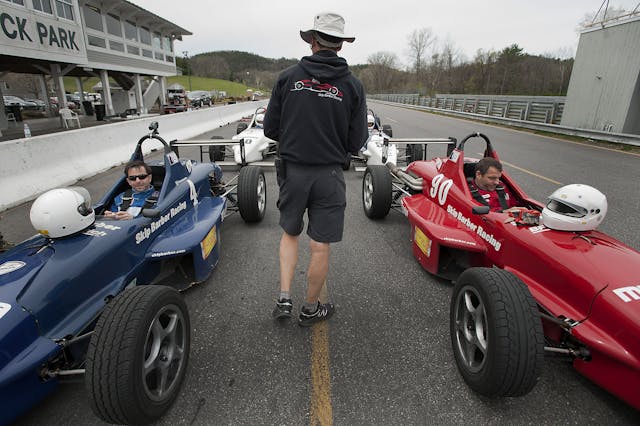
The regulations Pobst and Earwood wrote briefly cover passing on a straightaway, which comes down to allowing the lead driver to make “one safe move” to defend his position and requiring him to give a car width “plus six inches” of racing room if the overtaking driver has already committed to a pass. But most of the appendix is devoted to what happens in the turns. “The grayest area in racing is, Is this my corner or is it your corner?” Earwood says.
Is this my corner, or is it your corner?
Earwood acknowledges that it’s impossible to write rules that bring absolute certainty to an issue that’s inherently ambiguous. But he and Pobst wanted to give drivers and race stewards a conceptual framework for understanding how to think about rights and responsibilities on the track. Their deepest insight is summed up in Pobst’s exquisitely succinct formulation: “Do not hit what you can see.” Sounds self-evident, right? But you’d be amazed how often attempted passes end up in chippy I-was-there/no-you-weren’t squabbles.
Most competitive passes are made under braking, and postmortems usually focus on the relative positions of the cars in the brake zone. The new regs specify that the overtaking driver has to “present himself,” that is, make it into the peripheral vision of the driver he’s passing, before the lead driver turns for the apex. For closed-wheel cars, this means having the front end up to the lead car’s A-pillar or windshield. For open wheelers, it means having the front wheel up to the lead driver’s shoulder. In both cases, Earwood emphasizes, the overtaking car has to be in position before the driver being passed starts moving his hands to turn into the corner.
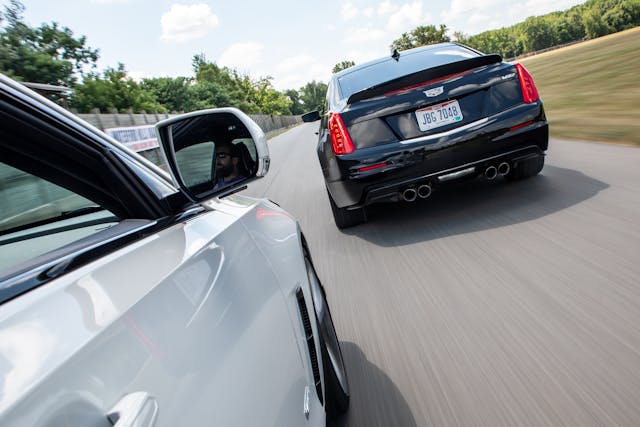
Pobst also came up with the concept of the Vortex of Danger. This refers to the area where you’re overlapping the car in front of you but you’re not far enough alongside to execute a clean pass. In other words, you’re in the blind spot. Say you go inside somebody under braking but don’t reach the point where he can see you, then you’re to blame if you take him out when he turns for the apex. Ditto on corner exit. You may be quick enough to get some overlap after the apex. But you’re at fault if he can’t see you and you clean him out when he tracks out on the normal racing line.
I think the new SCCA rules are better than anything I’ve ever seen before, and I believe they’ll be a useful tool for adjudicating protests and indoctrinating drivers—especially new drivers—in the future. Still, I suspect they’re more applicable to club racing than professional motorsports, where people are competing for their livelihoods rather than plastic trophies and winner decals. So, I guess I shouldn’t have been surprised that most of the pros I spoke with didn’t think new rules would make much of a difference.
Join us for part two next week, when Preston sits down with Bryan Herta, Ricky Taylor, Derek Daly, and others to further break down the art of the overtake.
Check out the Hagerty Media homepage so you don’t miss a single story, or better yet, bookmark it.

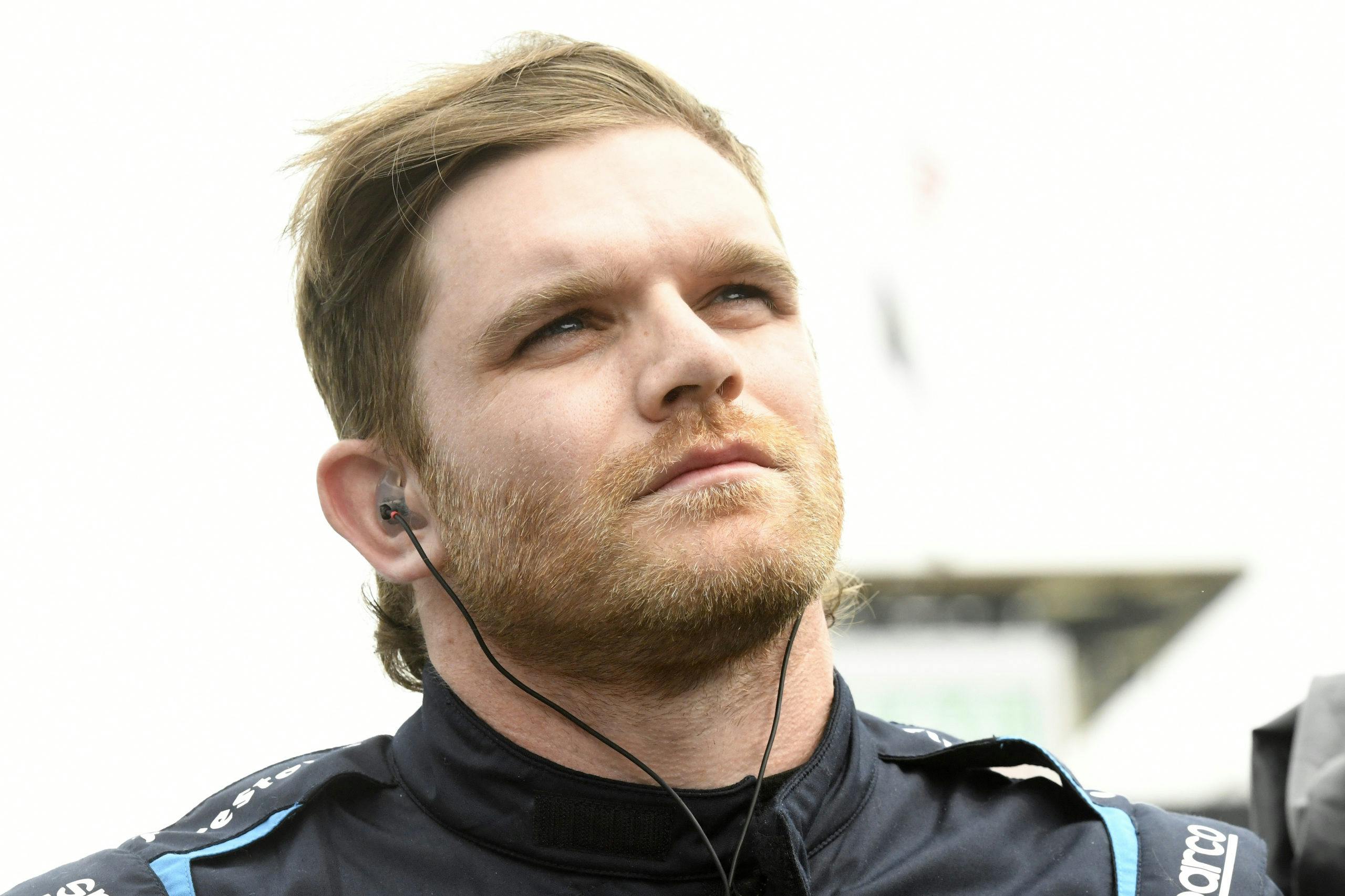


















I’ve done a wee bit of passing in karts back in the ’70s, but in reading this article, I suddenly became very glad that I turned to drag racing, where passing or being passed is generally quite safe and quite obvious to all observers and drivers! 🤔